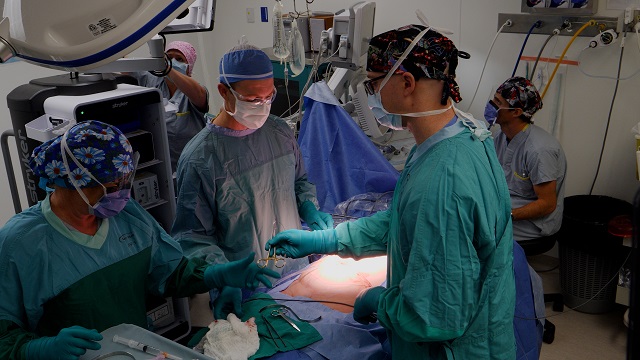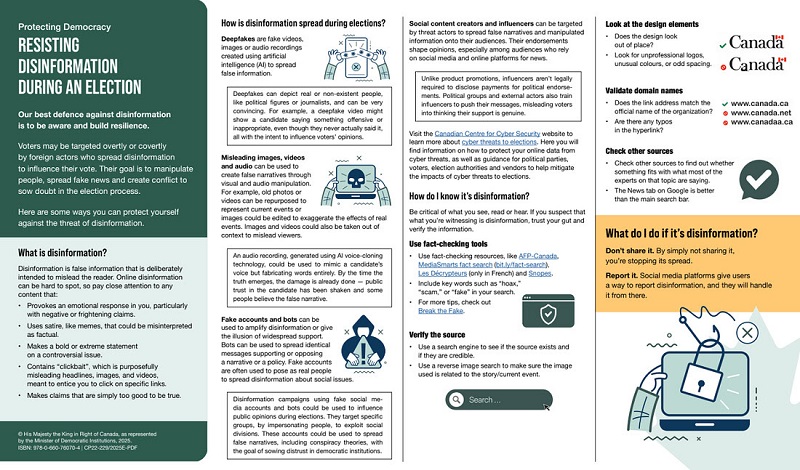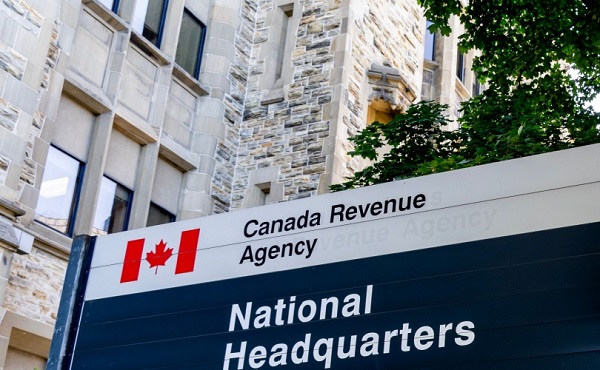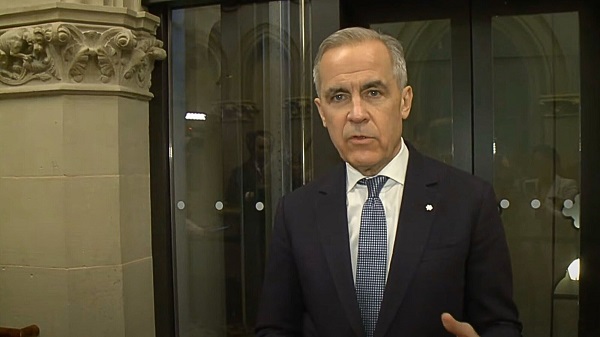Alberta
Doubling surgical capacity in Rocky Mountain House

Rural Albertans will be able to access surgeries quicker and closer to home now that the expansion and renovation of the Rocky Mountain House Health Centre is complete.
The Rocky Mountain House Health Centre has been providing residents with health care since 1971, including surgical services. Alberta Infrastructure has completed an addition to the facility, which includes a new operating room. This will enable approximately 120 Albertans per month to receive surgery, doubling the number of monthly surgeries. This additional, brand-new operating room is also expected to decrease the wait lists for surgeries.
The expanded Rocky Mountain House Health Centre provides an additional 440 square metres (4,736 square feet) and includes:
- a new operating room,
- 6 additional recovery beds,
- a patient support area, and
- an updated medical device reprocessing department.
The new spaces can be accessed from the existing site thanks to the addition of an upgraded hallway that connects the two buildings.
“Completing the expansion and renovation of the Rocky Mountain House Health Centre is a significant step forward in delivering Alberta Surgical Initiative projects province wide. This investment into health care infrastructure will increase surgical capacity, helping Albertans get treatment when and where they need it.”
The Rocky Mountain House Health Centre upgrade is part of the Alberta Surgical Initiative (ASI), which aims to enhance surgical capacity across the province by expanding and maximizing existing health care space. Over the next three years, the 2024 Capital Plan is providing $313 million for ASI projects throughout the province.
Alberta Infrastructure and Alberta Health Services share the responsibility for delivering ASI projects. Alberta Health Services leads the delivery of smaller projects, while Alberta Infrastructure delivers capital projects over $5 million.
“Albertans deserve timely access to surgeries, and they should be able to get them close to home. The expansion and renovation of the Rocky Mountain House Health Centre will increase its capacity so more Albertans can get the surgeries they need when they need them. Through the Alberta Surgical Initiative, we are improving access to surgical care and funding projects across the province, including in rural communities like Rocky Mountain House.”
Alberta Infrastructure is working on 20 ASI projects in communities across Alberta, including Brooks, Calgary, Camrose, Edmonton, Fort Saskatchewan, Innisfail, Lethbridge, Olds, Ponoka, St. Albert and Stettler. Lethbridge will be the next community to benefit from a completed ASI project. The expansion of two operating rooms and more surgical inpatient rooms at the Chinook Regional Hospital is anticipated to be completed later this fall.
“The expanded Rocky Mountain House Health Centre will help ensure more residents can access surgeries and receive the care they need in a timely manner. Investments like these in rural Alberta matter and I’d like to thank Minister Guthrie and Minister LaGrange for delivering on this project that will double our surgical capacity in Rocky Mountain House.”
Quick facts
- The total budget for the Rocky Mountain House Health Centre ASI project was $15 million.
- This Alberta Infrastructure project was completed on time and on budget. Approximately 85 construction-related jobs were created during the project.
- In addition to the new building, other renovations include new mechanical and electrical building systems.
- Alberta Infrastructure is managing other ASI projects at the following locations:
- Brooks Health Centre
- Calgary
- Alberta Children’s Hospital
- Foothills Medical Centre
- South Health Campus
- Camrose – St. Mary’s Hospital
- Edmonton
- Grey Nuns Community Hospital
- Misericordia Community Hospital
- Royal Alexandra Hospital
- Walter C. Mackenzie Centre (University of Alberta Hospital)
- Fort Saskatchewan Community Hospital
- Innisfail Health Centre
- Lethbridge – Chinook Regional Hospital
- Olds Hospital and Care Centre
- Ponoka Hospital and Care Centre
- St. Albert – Sturgeon Community Hospital
- Stettler Hospital and Care Centre
- Other ASI projects completed by Alberta Infrastructure:
- Grande Prairie Regional Health Centre (completed in July 2022)
- University of Alberta (completed September 2023)
Alberta
Made in Alberta! Province makes it easier to support local products with Buy Local program

Show your Alberta side. Buy Local. |
When the going gets tough, Albertans stick together. That’s why Alberta’s government is launching a new campaign to benefit hard-working Albertans.
Global uncertainty is threatening the livelihoods of hard-working Alberta farmers, ranchers, processors and their families. The ‘Buy Local’ campaign, recently launched by Alberta’s government, encourages consumers to eat, drink and buy local to show our unified support for the province’s agriculture and food industry.
The government’s ‘Buy Local’ campaign encourages consumers to buy products from Alberta’s hard-working farmers, ranchers and food processors that produce safe, nutritious food for Albertans, Canadians and the world.
“It’s time to let these hard-working Albertans know we have their back. Now, more than ever, we need to shop local and buy made-in-Alberta products. The next time you are grocery shopping or go out for dinner or a drink with your friends or family, support local to demonstrate your Alberta pride. We are pleased tariffs don’t impact the ag industry right now and will keep advocating for our ag industry.”
Alberta’s government supports consumer choice. We are providing tools to help folks easily identify Alberta- and Canadian-made foods and products. Choosing local products keeps Albertans’ hard-earned dollars in our province. Whether it is farm-fresh vegetables, potatoes, honey, craft beer, frozen food or our world-renowned beef, Alberta has an abundance of fresh foods produced right on our doorstep.
Quick facts
- This summer, Albertans can support local at more than 150 farmers’ markets across the province and meet the folks who make, bake and grow our food.
- In March 2023, the Alberta government launched the ‘Made in Alberta’ voluntary food and beverage labelling program to support local agriculture and food sectors.
- Through direct connections with processors, the program has created the momentum to continue expanding consumer awareness about the ‘Made in Alberta’ label to help shoppers quickly identify foods and beverages produced in our province.
- Made in Alberta product catalogue website
Related information
Alberta
Province to expand services provided by Alberta Sheriffs: New policing option for municipalities

Expanding municipal police service options |
Proposed amendments would help ensure Alberta’s evolving public safety needs are met while also giving municipalities more options for local policing.
As first announced with the introduction of the Public Safety Statutes Amendment Act, 2024, Alberta’s government is considering creating a new independent agency police service to assume the police-like duties currently performed by Alberta Sheriffs. If passed, Bill 49 would lay additional groundwork for the new police service.
Proposed amendments to the Police Act recognize the unique challenges faced by different communities and seek to empower local governments to adopt strategies that effectively respond to their specific safety concerns, enhancing overall public safety across the province.
If passed, Bill 49 would specify that the new agency would be a Crown corporation with an independent board of directors to oversee its day-to-day operations. The new agency would be operationally independent from the government, consistent with all police services in Alberta. Unlike the Alberta Sheriffs, officers in the new police service would be directly employed by the police service rather than by the government.
“With this bill, we are taking the necessary steps to address the unique public safety concerns in communities across Alberta. As we work towards creating an independent agency police service, we are providing an essential component of Alberta’s police framework for years to come. Our aim is for the new agency is to ensure that Albertans are safe in their communities and receive the best possible service when they need it most.”
Additional amendments would allow municipalities to select the new agency as their local police service once it becomes fully operational and the necessary standards, capacity and frameworks are in place. Alberta’s government is committed to ensuring the new agency works collaboratively with all police services to meet the province’s evolving public safety needs and improve law enforcement response times, particularly in rural communities. While the RCMP would remain the official provincial police service, municipalities would have a new option for their local policing needs.
Once established, the agency would strengthen Alberta’s existing policing model and complement the province’s current police services, which include the RCMP, Indigenous police services and municipal police. It would help fill gaps and ensure law enforcement resources are deployed efficiently across the province.
Related information
-

 2025 Federal Election15 hours ago
2025 Federal Election15 hours agoMEI-Ipsos poll: 56 per cent of Canadians support increasing access to non-governmental healthcare providers
-

 2025 Federal Election1 day ago
2025 Federal Election1 day agoEuthanasia is out of control in Canada, but nobody is talking about it on the campaign trail
-

 2025 Federal Election24 hours ago
2025 Federal Election24 hours agoAI-Driven Election Interference from China, Russia, and Iran Expected, Canadian Security Officials Warn
-

 2025 Federal Election8 hours ago
2025 Federal Election8 hours agoRCMP Whistleblowers Accuse Members of Mark Carney’s Inner Circle of Security Breaches and Surveillance
-

 Health16 hours ago
Health16 hours agoTrump admin directs NIH to study ‘regret and detransition’ after chemical, surgical gender transitioning
-

 illegal immigration1 day ago
illegal immigration1 day agoDespite court rulings, the Trump Administration shows no interest in helping Abrego Garcia return to the U.S.
-

 Bjorn Lomborg1 day ago
Bjorn Lomborg1 day agoGlobal Warming Policies Hurt the Poor
-

 2025 Federal Election1 day ago
2025 Federal Election1 day agoConservative MP Leslyn Lewis warns Canadian voters of Liberal plan to penalize religious charities






